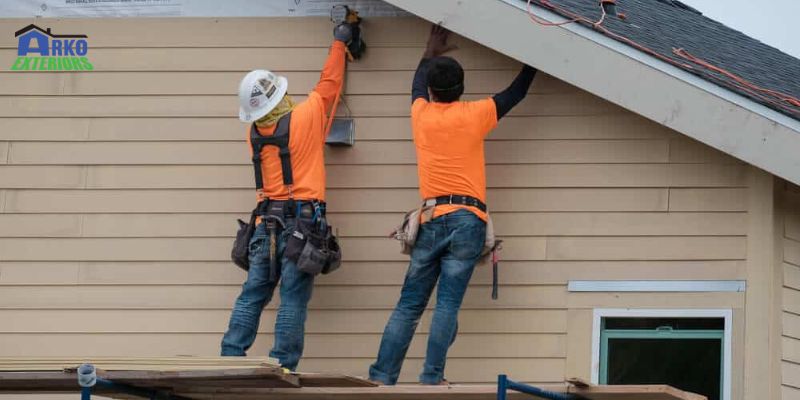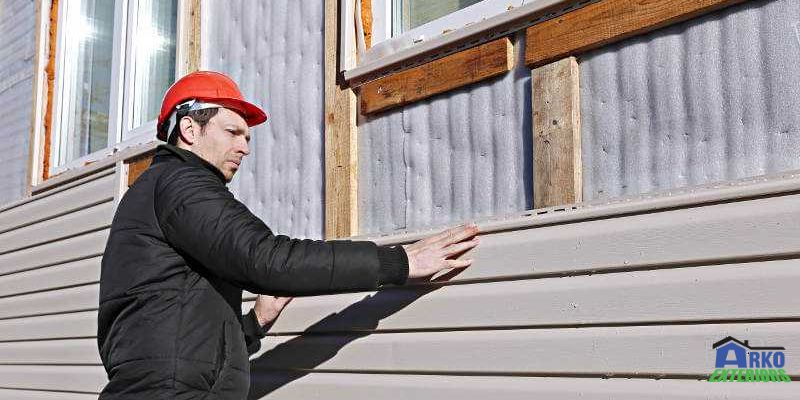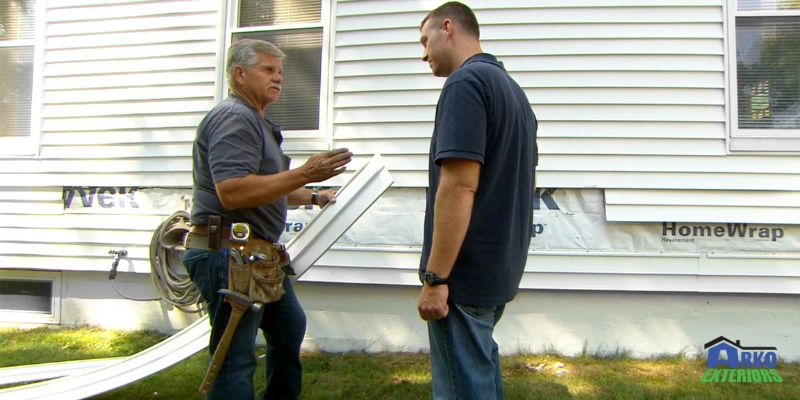Siding is an essential aspect of any home’s exterior. Choosing the right siding material, color and maintenance plan can significantly enhance the visual appeal of your home while offering protection against harsh weather elements. However, with the myriad of options available today, selecting the perfect siding can be overwhelming. From vinyl to wood, fiber cement and metal, each siding material has its unique characteristics, benefits and drawbacks. Similarly, choosing the right color can seem like an impossible task with the countless shades and hues available. Additionally, proper maintenance is vital to ensure your siding looks great and lasts for years to come.
Here’s a guide to siding selection, covering everything you need to consider…
#1 Durability:

When choosing siding materials, consider the durability of the product. The durability of siding is important because it can impact the longevity of the material and ultimately the cost-effectiveness of your investment. Some materials, like vinyl, are known for their durability and ability to withstand harsh weather conditions. Other materials, like wood, may require more maintenance over time, but can offer a unique aesthetic appeal.
It’s important to also consider the environmental conditions in your area when selecting siding materials. For example, if you live in a region with extreme temperatures or frequent storms, you may want to consider a more durable material like fiber cement or metal siding.
#2 Maintenance:

Another important factor to consider when selecting siding for your home is the maintenance required to keep the siding in good condition. Some materials, like vinyl and metal siding, require minimal maintenance and can be easily cleaned with soap and water. Other materials, like wood, may require more frequent maintenance, such as staining or painting, to protect the material from water damage, rot and insects.
Consider the amount of time and effort you’re willing to put into maintaining your siding when selecting a material. If you’re looking for a low-maintenance option, vinyl or metal siding may be a good choice. If you’re willing to put in the effort to maintain your siding, wood or fiber cement siding may be a good choice. Ultimately, the maintenance required for your siding can impact the overall appearance of your home, so it’s important to make an informed decision.
#3 Energy Efficiency:
Energy efficiency is an important factor to consider when selecting siding for your home, as it can impact your home’s energy consumption and utility costs. Some siding materials, like insulated vinyl siding or fiber cement siding, can improve your home’s insulation and energy efficiency. Insulated siding typically has a foam backing that provides an extra layer of insulation and can help reduce your heating and cooling costs.
Another factor to consider is the color of your siding. Lighter colors tend to reflect heat and sunlight, keeping your home cooler in the summer months. On the other hand, darker colors absorb heat and sunlight, which can help keep your home warmer in the winter months. If you’re looking to improve your home’s energy efficiency, consider selecting a siding material and color that can help reduce your energy consumption and utility costs.
#4 Style & Aesthetics:
The style and aesthetics of your siding can have a significant impact on your home’s curb appeal and overall appearance. When selecting siding for your home, consider the architectural style of your home and the surrounding neighborhood. You want to choose a siding material and color that complements your home’s style and enhances its appearance.
Some popular siding styles include traditional lap siding, shingle siding and vertical siding. Additionally, some siding materials, like fiber cement siding, can be designed to mimic the appearance of wood or other natural materials, providing a more authentic look while also offering the durability and low maintenance benefits of synthetic material.
#5 Cost:
Cost is a critical factor to consider when selecting siding for your home. The cost of siding materials can vary widely depending on the material, quality and installation requirements. Vinyl siding is often considered one of the most affordable siding options, while natural materials like wood or stone can be more expensive.
When considering the cost of siding, it’s important to factor in the long-term costs of maintenance and repair. While some materials may have a higher upfront cost, they may require less maintenance over time, making them a more cost-effective option in the long run.
It’s also important to consider the installation cost of your siding. Some materials, like vinyl or aluminum siding, can be relatively easy to install and may not require professional installation. Other materials, like fiber cement or natural stone, may require more extensive installation and may require professional installation, which can add to the overall cost.
#6 Environmental Impact:
The environmental impact of your siding choice is also an essential factor to consider when selecting siding for your home. Some siding materials, like vinyl and aluminum, can be recycled, making them a more environmentally friendly option. Other materials, like natural stone or wood, are renewable but may require more resources to produce and transport.
Additionally, some siding materials may contain harmful chemicals or additives, like formaldehyde or volatile organic compounds (VOCs), which can impact indoor air quality and contribute to environmental pollution. When selecting siding, consider choosing materials that are environmentally friendly and free of harmful chemicals.
By selecting siding materials that are environmentally friendly and sustainable, you can reduce your home’s environmental impact and contribute to a healthier and more sustainable planet.
Summary:
In conclusion, selecting the right siding for your home involves weighing different factors such as budget, durability and maintenance requirements. With the range of materials and colors available, there is a siding option for every taste and preference. Whether you choose vinyl, fiber cement, wood or any other material, proper maintenance can help prolong the life of your siding and maintain its aesthetic appeal. By following the tips and guidelines in this guide, you can make an informed decision and select the perfect siding for your home.

